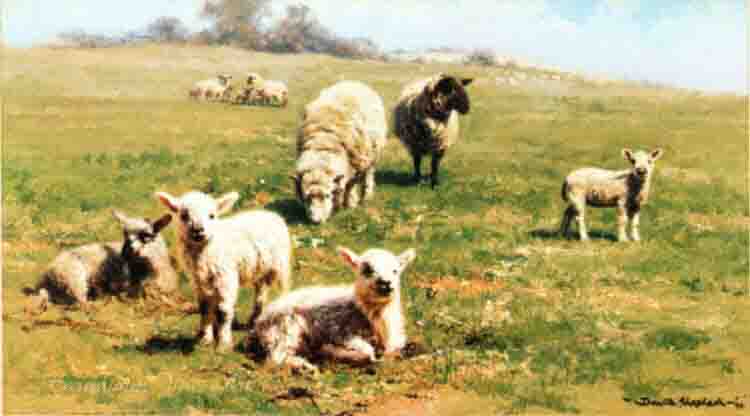Country cousins
David Shepherd

"Country Cousins"
Signed Limited Edition of 850
Image Size:- 9" x 16"
Published 1985
In stock:- price; please call
Sheep husbandry is practised throughout the majority of the inhabited world, and has been fundamental to many civilizations.
In the modern era, Australia, New Zealand, the southern and central South American nations, and the British Isles are most closely associated with sheep production.
There is a large lexicon of unique terms for sheep husbandry which vary considerably by region and dialect.
Use of the word sheep began in Middle English as a derivation of the Old English word sceap; it is both the singular and plural name for the animal.
A group of sheep is called a flock.
Many other specific terms for the various life stages of sheep exist, generally related to lambing, shearing, and age.
Being a key animal in the history of farming, sheep have a deeply entrenched place in human culture, and find representation in much modern language and symbology.
As livestock, sheep are most often associated with pastoral, Arcadian imagery. Sheep figure in many mythologies, such as the Golden Fleece, and major religions, especially the Abrahamic traditions.
In both ancient and modern religious ritual, sheep are used as sacrificial animals.
The 1970s saw a resurgence in the use of livestock guardian dogs and the development of new methods of predator control by sheep producers, many of them non lethal.
Donkeys and guard llamas have been used since the 1980s in sheep operations, using the same basic principle as livestock guardian dogs.
Interspecific pasturing, usually with larger livestock such as cattle or horses, may help to deter predators, even if such species do not actively guard sheep.
In addition to animal guardians, contemporary sheep operations may use non-lethal predator deterrents such as motion-activated lights and noisy alarms.
Signed, limited edition, prints and original paintings, drawings for sale.
30 years experience and a collection of hundreds of David Shepherd signed, limited edition prints in the UK!
Studio open, 7 days a week!Viewing by appointment
signed prints and original paintings and drawings by the world acclaimed artist L.S. Lowry.
Sir William Russell Flint read here.